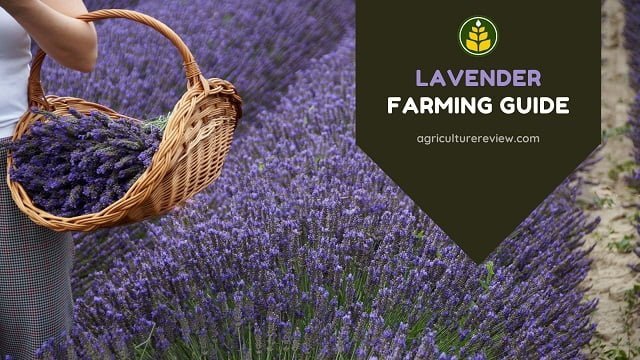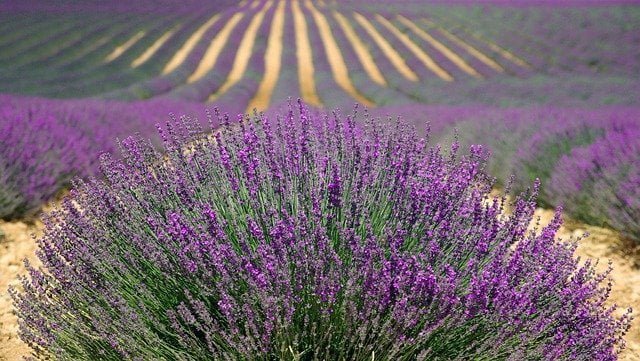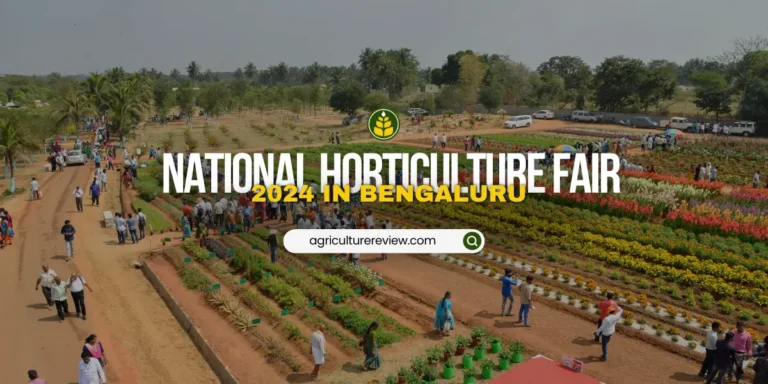This ultimate guide on lavender farming will help you to learn and start your own lavender farming enterprise. Know from Soil requirements to harvesting of lavender step by step. Cultivation of lavender is a profitable business but growing lavender needs knowledge and practice.
Even if you are a small farm owner or a gardener then too you can make few 100 dollars from few dozens of lavender plants. Lavender flowers are used to make useful products such as air freshener, massage oils, hair oils, skin care products like face cream and soap, medicinal products etc.
Table of Contents
Introduction
Lavender of Lavandula can be annual as well as perennial flowering plant depending on the species and variety. It is a genus of 47 species of flowering plants. Moreover, there are about 100 varieties of lavender.
According to oec.world Barbados is the top most importer of lavender in the world. And United States and United Kingdom are the top most exporter of lavender in the world.
Lavender farming on a large scale can ensure a good amount of profit. If you follow best practices in your large farms then you can even earn in crores (Indian Rupees) annually. That’s why skilled farmers are joining hands for farming of lavender.
Botanical Classification
Botanical Name: Lavandula angustifolia.
Family: Lamiaceae
Order: Lamiales
Class: Magnoliopsida
Division: Magnoliophyta
Chromosome Number: 18 (2n = 18)
Source: wikipedia.org
Origin Of Lavender
Scientists and researchers believe Mediterranian region, Middle East, and India to be the centres of origin of Lavender. However nowadays it is widely cultivated in United States, Europe, Australia, and New Zealand.
Source: lavendersense.com
Area & Production
Bulgaria is the leading producer of lavender oil. It produces 52% of the total global production of lavender oil. This is followed by France, and China.
The total production of fine lavender in the world is 380 tonnes. While Bulgaria alone produces around 250 tonnes of fine lavender in the world. France produces around 100 tonnes of lavender.
Other lavender producing countries are United States, United Kingdom, Australia, South Africa, India, Indonesia, etc.
Source: researchgate.com
Lavender Farming Guide

To get successful in lavender farming, you will need to know about important aspects for growing lavender successfully. Lack of knowledge and bad farm practices can result in lower yield. Hence, knowing soil requirements, temperature & climate, field preparation, irrigation, fertilizers, etc. helps in ensuring increased yield.
Soil Requirement
Soil plays an important role in successful farming of lavender. Light and well drained calcareous soil is considered ideal for growing lavender. Lavender crop is very sensitive to water logging condition. Soil pH should be in the range of 7.0 to 8.3.
However you can also start lavender farming in poor and eroded soil but the pH and drainage should be ideal. I will suggest you to get your soil tested for better results. The ideal temperature range for growing lavender is 15 to 30 degrees Celsius.
Climate & Temperature
Lavender crop loves Mediterranean climate. According to britannica.com the major climate type is hot, dry summers and cool, wet winters. But too much cold and hot climate can reduce the yield. That’s why mild climate is ideal with not too much cold winters or hot summers.
You can start farming in USDA plant hardiness zones 5, 6, 7, 8, and 9. Moreover lavender crop loves sunlight. Daily 6 to 8 hours of direct sunlight is ideal for getting higher yield. Spring and fall are the best season to start growing lavender.
Field Preparation
You can prepare your field by practicing 2 to 3 deep ploughings. This will help to remove weeds and plants. At this time you can add well decomposed organic manure or Farm Yard Manure to increase soil fertility.
You can also add jeevamrut or waste decomposer in your field to increase fertility. But lavender plants does not require too much fertilizer. Only applying low amount of organic fertilizer will be enough.
Variety
However there are about 100 varieties of lavender but you can not grow them all for commercial purposes. Generally lavender is blue to purple in colour. But depending on variety they can be pink, red, and white too. For commercial cultivation you can select the following varieties.
English Lavender
English lavender or Lavandula augustifolia is the most popular variety for commercial production. You can grow them in USDA plant hardiness zones 5, 6, 7, and 8. Cultivation of English lavender is done for getting dried flowers, essential oil, flavouring agents, and perfumes.
However the oil quantity of English lavender is little low but the quality is high. The essential oil content or English or true lavender is around 0.1 to 0.5%. You can grow them in regions having warm summers.
Spike Lavender
Spike Lavender or Lavadula latifolia is primarily grown in Mediterranean climate. That’s why you can not grow them everywhere. But if the climate of your region is similar to Mediterranean climate then you can start cultivating this variety.
You can start growing them for producing essential oils and fragrant soaps. Moreover the flowers of this variety are quite beautiful and popular in floral market.
Lavandin
Lavandin or Lavandula intermedia is also known as Dutch Lavender. It is the hybrid of English and spike lavender. Although the quality of oil is little lower but it produces increased yield of flowers and oil. The oil content of Lavandin variety is around 0.9 to 3%.
Spanish Lavender
Spanish Lavender or Lavandula stoechas is grown mainly for getting dried flowers. They are not cold hardy so if your region faces extreme cold climate winters then you can only grow them as annuals.
French Lavender
French lavender or Lavandula dentata is an extremely fragrant variety of lavender. You can also grow this variety in warmer climate. In many regions of United States farmers as well as gardeners use to grow them as annuals.

Propagation
This is one of the very important step of lavender farming. You can propagate lavender from seeds, cuttings, layering or tissue culture. The best practice to grow lavender for farming purposes is from cuttings. Growing lavender from cuttings is beneficial because the new plants will be identical to the mother plant.
Moreover, lavender seeds take much longer time to germinate and grow. This is the reason why for profitable lavender farming, farmers propagate lavender from cuttings. Spring and fall are the best season to propagate lavender.
From Seeds
To grow lavender from seeds you can germinate seeds directly in the prepared field or in germination trays. After sowing seeds, it will germinate in near about 5 weeks. But new seedlings will become ready for transplantation after approximately 6 months.
Spring is the best season for sowing of lavender seeds. You can sow seeds either through broadcasting or line sowing. For one square metres of area you should have 2 grams of seeds. Sow seeds 10 to 20 centimetres apart in rows. Sowing depth should not be more than 1 to 2 centimetres.
For germination in containers or trays you can use the mixture of 50% soil + 30% sand + 20% organic compost. Maintain adequate moisture in the field or trays till germination of seeds. But also take care waterlogging problems. Lavender plants does not loves too much moisture.
From Cuttings
This is the most profitable and time saving method for successful cultivation of lavender. You can either take softwood or hardwood cuttings from the nearest nursery or farm lands. Take 10 to 15 centimetres cuttings from the young top shoot of the mother plant.
Remove all the leaves from the 2/3rd part of cuttings from the bottom. Dip the bottom part in rooting hormones for few seconds. You can also use beejamrit for this purpose. Moreover, you can either propagate cuttings in prepared field or in trays.
For this purpose use the mixture of 70% river sand + 30% organic compost. Insert half of the cutting in the growing medium. Keep the growing medium little moist but not soggy. After few days you will notice the growth of new leaves.
From Layering
You can also propagate lavender from layering. This is also one of the easiest method to propagate lavender. For propagation by layering select a healthy and long stem. Leave the 10 centimetres of leaf cover from the tip. And remove leaves from 12 centimetres portion below 10 centimetres from the tip.
Cover the bare portion with the moist soil or you can put the bare portion one inches deep in the soil. After 6 to 12 weeks you will notice well developed roots. Now you can cut the new rooted plant and transplant it in the prepared field.
From Tissue Culture
It is the most expensive method for propagation of lavender. But this method of propagation have other benefits. You can produce genetically identical and disease free plants in large numbers. Tissue Cultured plant ensures high yield and better disease resistance.
Spacing
Proper spacing plays a major role in increase crop yield. You should maintain 4 feet distance between rows and 2 to 3 feet distance between plants. If you will follow this spacing then you can plant around 4000 lavender plants per acre.
Irrigation
Lavender plant doesn’t love wet soil but it requires adequate amount of water at critical plant growth stages. Moreover avoid overhead irrigation as it can create favourable environment for pest and diseases. If the annual rainfall is over 450 mm then you will not even need to worry about irrigating your field.
Lavender plant can withstand draught conditions. But you will need to irrigate your field before and after flowering season. The best practice is to use drip irrigation system. It will not only help to ensure adequate watering but will also help to control weeds.
Fertilizers
Lavender crop doesn’t need too much amount of fertilizers. Moreover fertilizing the field with organic fertilizers is much better than applying inorganic fertilizers. However for one hectare of land you will need to add 100 Kilograms Nitrogen, 40 Kilograms of Phosphorus and Potassium.
You can apply first doze of 20 Kilograms Nitrogen and full doze of potassium and phosphorus. Apply this fertilizer doze as basal application. You can apply remaining 80 Kilograms of Nitrogen in four split dozes. Two dozes in the first year and the remaining two in the second year.
Moreover, you can also add organic manure instead of inorganic fertilizers. Add 5 to 10 tonnes of well decomposed Farm Yard Manure for one hectare of land during field preparation. In addition you can also use sanjeevak periodically for increased yield.
Pests & Diseases
Lavender crop can get affected by slugs, whiteflies, mites, Con chinchilas, etc. To save your crop from any pest and disease attack you can spray common organic sprays. You can use a mix of garlic and chilli diluted in water for spraying on your crop once in every month.
However, keep checking for any early symptoms. Remove the infected plant in the initial stages of infection. This will help to save other plants in the field.

Harvesting
You can start harvesting your crop once the flowers have well developed. Generally summer season is the best time to harvest lavender. But on high slopes or hilly regions it will take a litter longer time.
With the help of sharp cutting tool cut the flowers along with the stems. You can cut 10 centimetres of stem length with the flowers.
FAQ
Which lavender is most fragrant?
Lavandin (Lavendula intermedia) is considered as the most fragrant Lavender in the world. It has been prepared by hybrid cross between Lavendula angustifolia and Lavendula latifolia.
How profitable is lavender farming?
By cultivating lavender in one acre farm you can earn up to 1 to 1.5 lakhs Indian Rupees.
How long does it take to harvest lavender?
3 years after the day of plantation your crop will get ready to be harvested. But after that you will continue to get subsequent harvest.
Author’s Note
I guess you are now clear on lavender farming. If you have any ideas, queries or suggestions, then you can leave your comment below. You can also connect with Agriculture Review on Facebook, Instagram, or Pinterest.






Nice.plz sir contact me and help me about it.i want to cultivate lavender.but in odisha there is no market to take them.so plz sir help me about marketing.my no. 7854009756.
Hi,
You can connect with Soap, Essential Oil, Agarbatti making companies to sell your produce. They offer best prices according to quality of oil content.